by Anthony Price
My universe was shaken to its foundation, like a building crumbling to the ground under the force of a 9.0 earthquake, after reading Ben Lamm’s guest column in Entrepreneur magazine: “Stop Calling Everyone an Entrepreneur—They Aren’t.”
I thought this was typical Silicon Valley propaganda, from a hotshot in a hoodie and jeans. But after my less-skeptical self emerged, I began to think there was merit to what Ben was espousing. Ben, the founder of several companies and CEO of a startup, believes that the “entrepreneur” label has become as ubiquitous as Nikes on NBA-wannabes. He says that a lot more people are qualified to manage a “Jamba Juice than take companies from inception, through market traction (paying customers), funding, growth and eventual IPO or exit.”
I full-heartedly agree. Ben comes from a world where solving big “hair-on-fire” problems and scaling a business as fast as possible are crucial to owning a market and attracting OPM: Other People’s Money. This business template requires a steady stream of capital to be pumped into the business as fuel, which most businesses don’t have.
The money that your small business burns through is yours, or if you are lucky, your family’s, friend’s or the bank’s. In reality, a startup business has a limited amount of time to build a business with paying customers, or it will fail. Think of Chobani yogurt in your refrigerator—it’s expiration date is a constant reminder that it will not last forever.
The pressure comes from investors. When you play with OPM, investors are the house, they make the rules, and they want to make lots of money (10, 20, or 30x return or more) from a liquidity event (an exit from your business within five to seven years as a result of selling or going public). In Ben’s view, the mission is the domination of an industry from the playbooks of Facebook, Google and Amazon.
Entrepreneurs Take Big Risks
Entrepreneurs view problems from a unique perspective. George Bernard Shaw, the playwright, said, “The reasonable man adapts himself to the world: the unreasonable one persists in trying to adapt the world to himself. Therefore all progress depends on the unreasonable man.” Entrepreneurs are the unreasonable men (and women), risk-takers, but not gamblers. To them, gambling is working at a job they don’t like, with no future for advancement, for a boss who doesn’t value them. Entrepreneurs are confident in their abilities to solve big problems, assemble a team and scale. They are a special group of people who believe in their vision, talent, version of reality and work ethic.
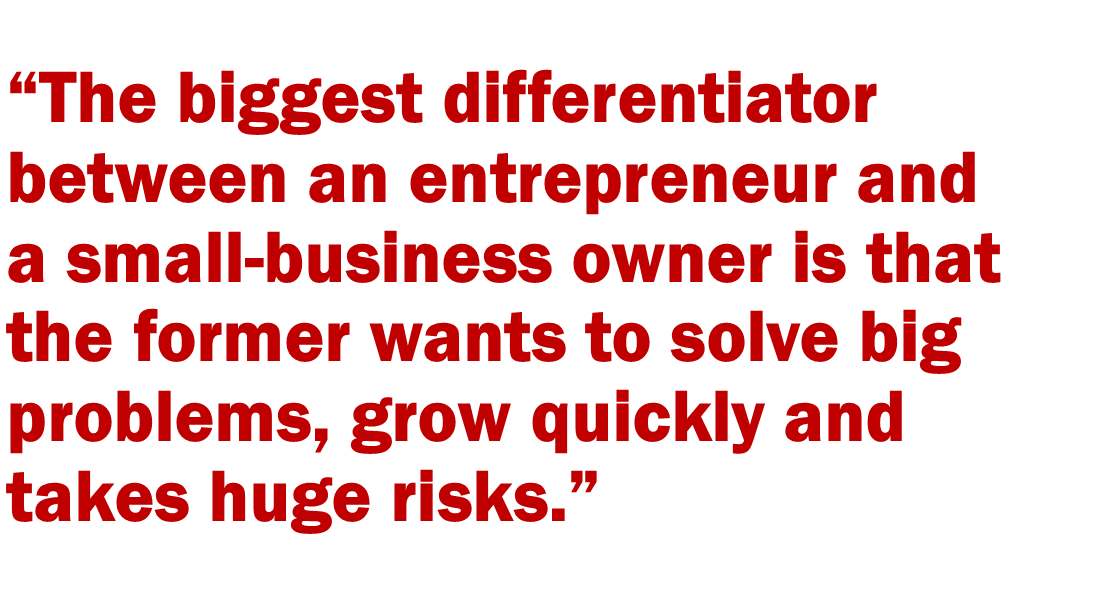 The biggest differentiator between an entrepreneur and a small-business owner is that the former wants to solve big problems, grow quickly and takes huge risks. Think Facebook, Google, and Tesla. Facebook has over two billion monthly users, and its mission is: “Give people the power to build community and bring the world closer together.” Google is the most visited website on the Internet. Its mission is: “To organize the world’s information and make it universally accessible and useful.” Founded in 2003, Tesla Motor’s mission is: “To accelerate the advent of sustainable transport by bringing compelling mass market electric cars to market as soon as possible.”
The biggest differentiator between an entrepreneur and a small-business owner is that the former wants to solve big problems, grow quickly and takes huge risks. Think Facebook, Google, and Tesla. Facebook has over two billion monthly users, and its mission is: “Give people the power to build community and bring the world closer together.” Google is the most visited website on the Internet. Its mission is: “To organize the world’s information and make it universally accessible and useful.” Founded in 2003, Tesla Motor’s mission is: “To accelerate the advent of sustainable transport by bringing compelling mass market electric cars to market as soon as possible.”
Small and Powerful
A business consists of coordinated activities that deliver value to customers with the intent of generating a profit to its owners. There are twenty-nine million small businesses in the U.S., which represent 99.9 percent of all businesses.
The U.S. Small Business Administration (SBA) defines a small business as having fewer than 500 employees; organized for profit; has a place of business in the U.S.; operates primarily in the U.S.; is independently owned and operated, and is not dominant in its field on a national basis. Michael Gerber, the author of The E-Myth states, “There is a myth in this country—I call it the E-Myth—which says that small businesses are started by entrepreneurs risking capital to make a profit. This is simply not so.”
Most small business owners make the misguided assumption that because they know the technical work of the business, they understand the business that does the technical work. These are two different things, just as being a home baker doesn’t make one competent to run a neighborhood bakery or a corporate chain of bakeries. Small business owner does not equal entrepreneur.
Compare Ben Lamm’s vision of a startup business on steroids with how most small businesses start. Look at your favorite small business. For example, the guy (Jim) who owns the automobile repair garage down the street probably started because he either worked in the family business or got tired of working for someone else. Jim doesn’t have a grand vision to be as ubiquitous as Pep Boys. Sure, he wants to make money, but the love of his craft, freedom from a boss, quality of life, and a sense that he can shape his destiny are all reasons that usually motivate someone to start or buy a business.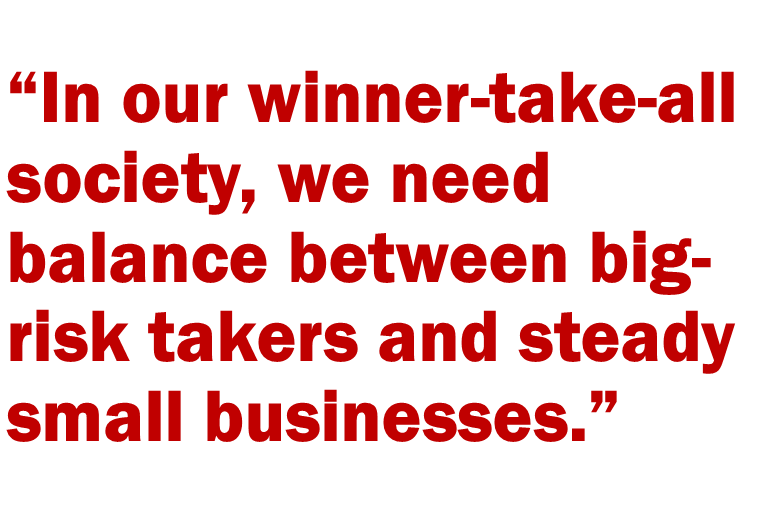
Just Do It
Customers determine winners in business. But a decisive factor for your future success comes down to how you answer this question: Will you be an entrepreneur or a small-business owner? Entrepreneurs take big risks to create something new, while small-business owners provide goods and services that the market needs right now. Each has its own value.
Life as a small-business owner is appealing. There’s no disputing its impact on the American psyche. In our winner-take-all society, we need balance between big-risk takers and steady small businesses. Ben states, “Entrepreneurs, at their core, are rare, transformative and risky. They are going to propel the society forward with big leaps of creative disruption. Small-business owners give us a stable base that de-risks the moonshots and protects us from the fallout of failures.” Our economy needs both the entrepreneur and the small-business owner.
To succeed in business, you have to know whether you’re playing as an entrepreneur who is ready to change the game, the industry, the world, or as a small-business owner seeking to make an impact on a smaller scale. If you’re trying to change the game, put on a pair of Shaquille O’Neal’s size 22, because that’s what changing the game feels like. Your choice whether to be an entrepreneur or small-business owner will affect how you start, fund, manage, and grow your business.
Takeaway: Decide what you will be. Choose one.
__________________________________
This is an edited excerpt from Get the Loot and Run: Find Money for Your Business, by Anthony Price of Hartford. Price is founder and CEO of Lootscout, and an entrepreneur, speaker, panelist, and judge for business competitions. A trusted adviser to startups and growing businesses, his expertise is sourcing growth capital for entrepreneurs. This excerpt is published with permission of the author.
 Rounding out the top ten are Virginia ($7,161), New Jersey ($7,151), Maryland ($7,043), Hawaii ($6,981), D.C. ($6,963), Texas ($6,902), Colorado ($6,718), and Georgia (6,675). New York is next at $6,671.
Rounding out the top ten are Virginia ($7,161), New Jersey ($7,151), Maryland ($7,043), Hawaii ($6,981), D.C. ($6,963), Texas ($6,902), Colorado ($6,718), and Georgia (6,675). New York is next at $6,671.


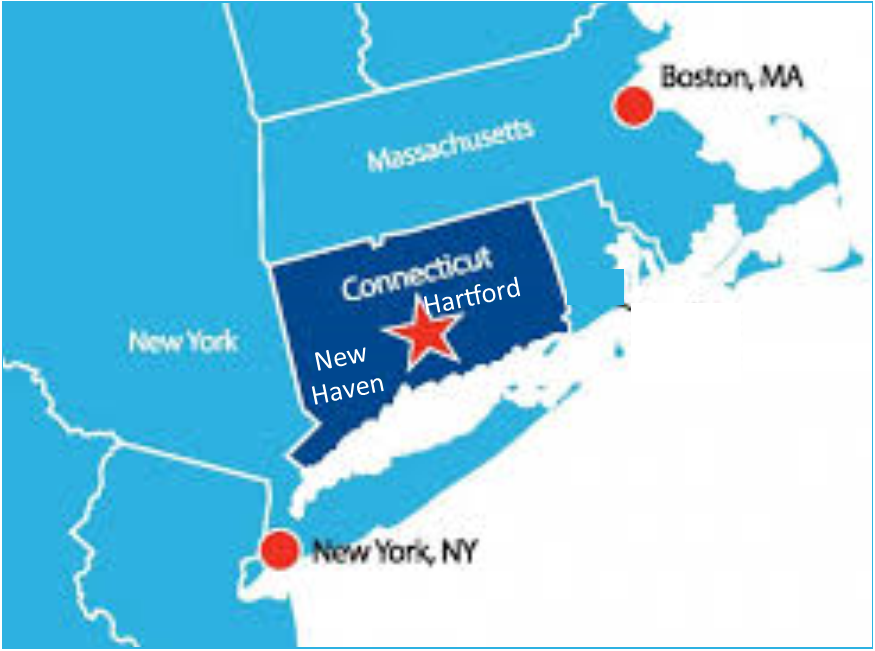 The characterization of two of the state’s largest cities as potential “suburbs” of New York and Boston, seemingly overlooking Bradley International Airport and Tweed-New Haven in the process, has raised questions from officials.
The characterization of two of the state’s largest cities as potential “suburbs” of New York and Boston, seemingly overlooking Bradley International Airport and Tweed-New Haven in the process, has raised questions from officials.
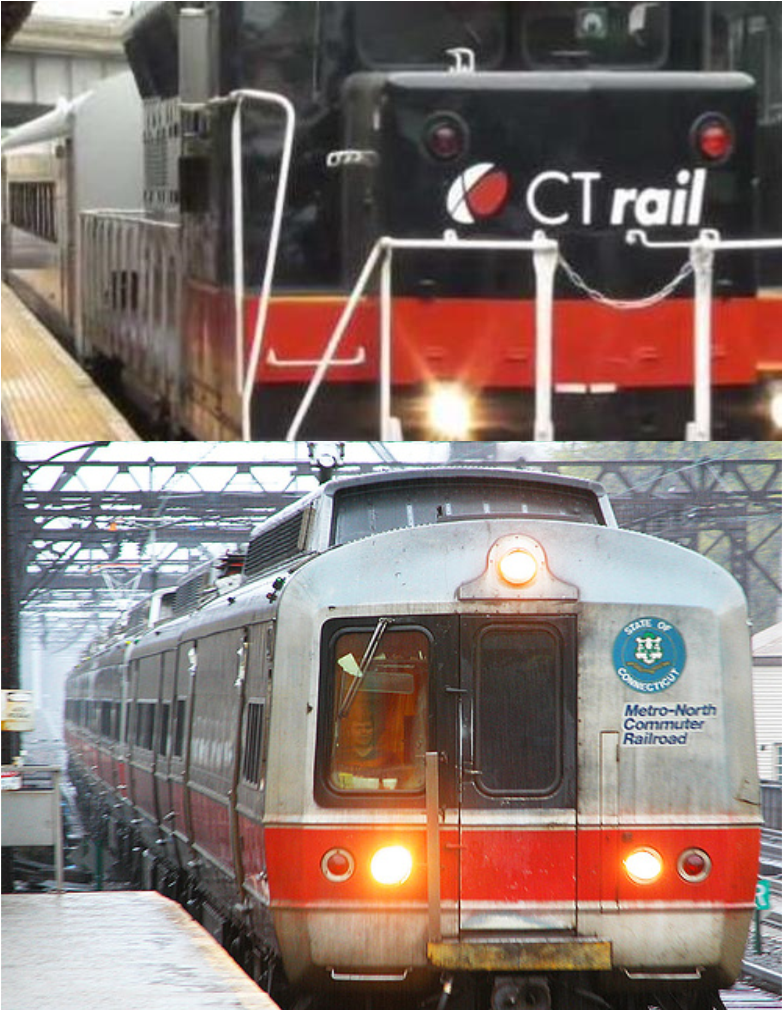 Cohen, who has received national recognition in his field, praised the CTrail Hartford line - which connects New Haven, Hartford, and Springfield, MA - and CTfasttrak bus line – which links Hartford and New Britain - noting that “we are starting to see residential and business development near the stations, and this is one of the big benefits of transit.”
Cohen, who has received national recognition in his field, praised the CTrail Hartford line - which connects New Haven, Hartford, and Springfield, MA - and CTfasttrak bus line – which links Hartford and New Britain - noting that “we are starting to see residential and business development near the stations, and this is one of the big benefits of transit.”
 The strong turnout percentage this year is underscored by the fact that the number of registered voters is considerably larger. As of Nov. 2 – not including those individuals who registered and voted on Election Day – the number of registered voters in Connecticut was 2,165,045, according to the Office of Secretary of the State. Back in the ‘90’s, the list of registered voters hovered between 1.7 million and 1.8 million. This year’s election brought a higher percentage of voters to the polls from a larger list of individuals registered to vote.
The strong turnout percentage this year is underscored by the fact that the number of registered voters is considerably larger. As of Nov. 2 – not including those individuals who registered and voted on Election Day – the number of registered voters in Connecticut was 2,165,045, according to the Office of Secretary of the State. Back in the ‘90’s, the list of registered voters hovered between 1.7 million and 1.8 million. This year’s election brought a higher percentage of voters to the polls from a larger list of individuals registered to vote. The accelerated change in attitude at DOT since Redeker took the helm in 2011 was evident in his being warmly introduced as a friend prior to his keynote address – not the adversary that previous vehicle-centric commissioners may have been. He went on to highlight the department’s work on state projects, and in concert with municipalities, that is steadily transforming Connecticut into a more pedestrian and bike-friendly state.
The accelerated change in attitude at DOT since Redeker took the helm in 2011 was evident in his being warmly introduced as a friend prior to his keynote address – not the adversary that previous vehicle-centric commissioners may have been. He went on to highlight the department’s work on state projects, and in concert with municipalities, that is steadily transforming Connecticut into a more pedestrian and bike-friendly state.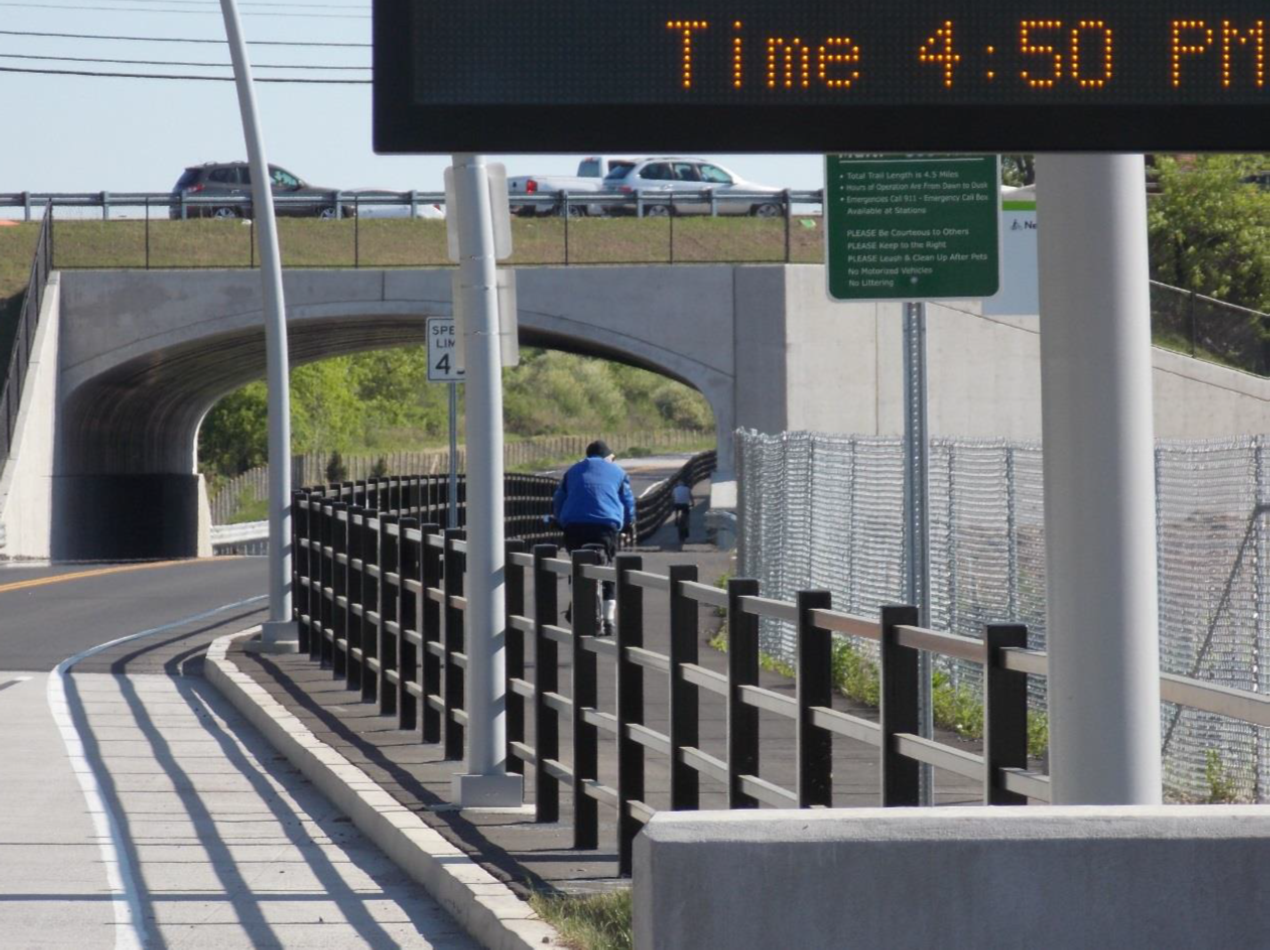


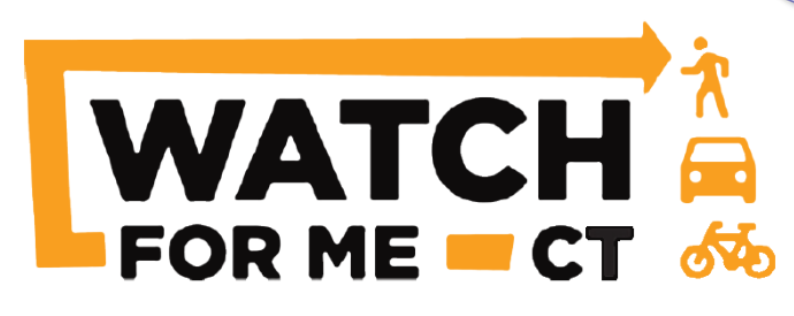

 Leading the way in the five-year analysis, released this month, are Barnstable in Massachusetts, at 13.7 percent employment growth; in New Hampshire it is Portsmouth at 10.1 percent, in Rhode Island, Providence/Warwick at 7.7 percent; Maine the greatest job growth has been in Portland/South Portland at 7.1 percent. Vermont is the only New England state with a leading city growing jobs at lower rate than Connecticut’s – Burlington/South Burlington at .8 percent. Only Alaska and Wyoming are lower, rounding out the 50 states.
Leading the way in the five-year analysis, released this month, are Barnstable in Massachusetts, at 13.7 percent employment growth; in New Hampshire it is Portsmouth at 10.1 percent, in Rhode Island, Providence/Warwick at 7.7 percent; Maine the greatest job growth has been in Portland/South Portland at 7.1 percent. Vermont is the only New England state with a leading city growing jobs at lower rate than Connecticut’s – Burlington/South Burlington at .8 percent. Only Alaska and Wyoming are lower, rounding out the 50 states.
 t have increased as much in comparison to other states, but isn’t the real question, ‘Why is it increasing at all?’” Luis Perez, president and CEO of
t have increased as much in comparison to other states, but isn’t the real question, ‘Why is it increasing at all?’” Luis Perez, president and CEO of 


 The biggest differentiator between an entrepreneur and a small-business owner is that the former wants to solve big problems, grow quickly and takes huge risks. Think Facebook, Google, and Tesla. Facebook has over two billion monthly users, and its mission is: “Give people the power to build community and bring the world closer together.” Google is the most visited website on the Internet. Its mission is: “To organize the world’s information and make it universally accessible and useful.” Founded in 2003, Tesla Motor’s mission is: “To accelerate the advent of sustainable transport by bringing compelling mass market electric cars to market as soon as possible.”
The biggest differentiator between an entrepreneur and a small-business owner is that the former wants to solve big problems, grow quickly and takes huge risks. Think Facebook, Google, and Tesla. Facebook has over two billion monthly users, and its mission is: “Give people the power to build community and bring the world closer together.” Google is the most visited website on the Internet. Its mission is: “To organize the world’s information and make it universally accessible and useful.” Founded in 2003, Tesla Motor’s mission is: “To accelerate the advent of sustainable transport by bringing compelling mass market electric cars to market as soon as possible.”




























